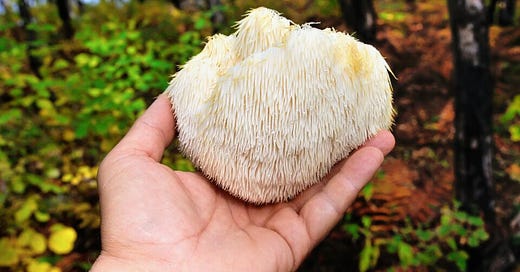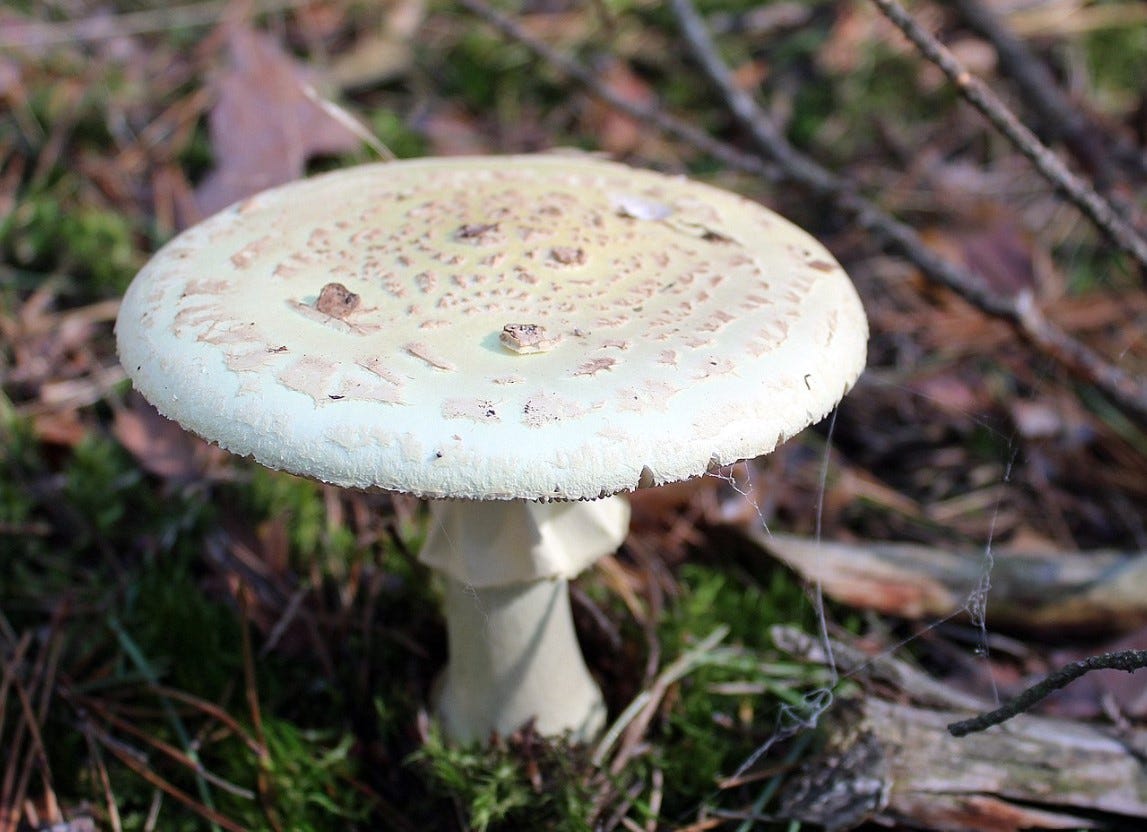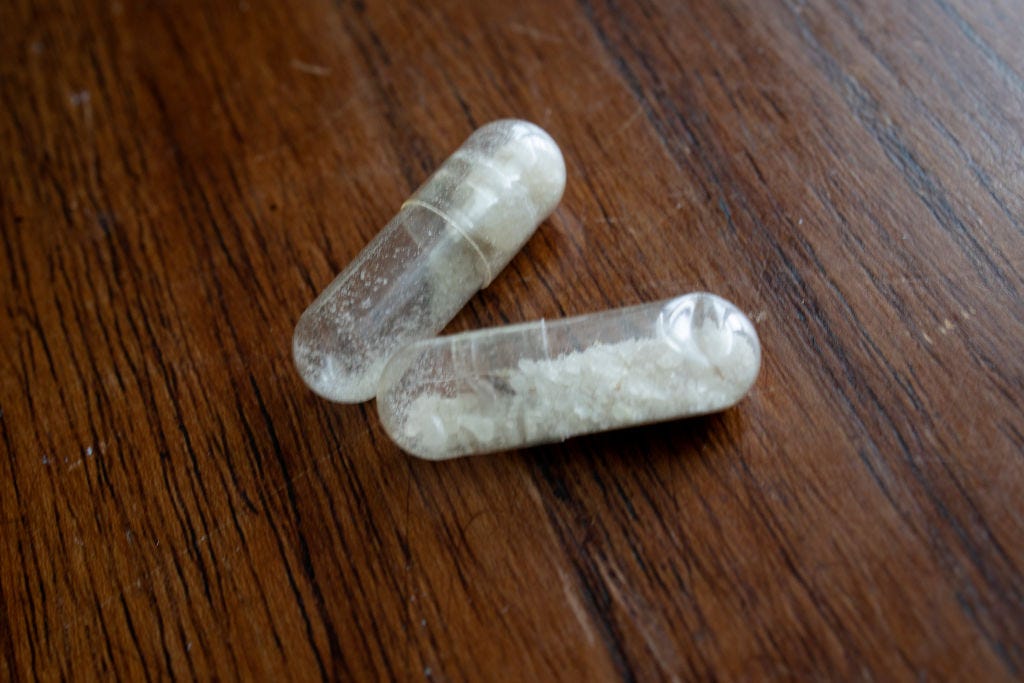Lion's mane & your brain: Mushrooms effects on memory
Fungi Friday's - February 17th, 2023 - Issue #68
Hi there Fungi Fam,
We’re back with another issue of Fungi Friday’s — your favorite fungi publication on the web! The boys at Iowa Fungi had our first meeting of the year this past weekend, where we started to lay the groundwork for all of the menial, yet important tasks that need to be accomplished over the next month and a half, as we continue to inch closer to growing season. As I’ve said before and i’m sure i’ll say again… Quarter two will be here sooner than we realize!
For now though, plenty of work to be done. So let’s get onto this weeks featured articles!
Edible mushrooms boost nerve growth and enhance memory
A study conducted by researchers from the University of Malaya has found that edible mushrooms may have beneficial effects on the brain. Specifically, the researchers found that consuming certain types of mushrooms, including lion's mane, oyster, and shiitake, can increase nerve growth factor (NGF) production, which is important for the growth and survival of neurons. The study also found that mice who were fed a diet containing these mushrooms had better memory and learning abilities compared to those who were not.
The researchers believe that these beneficial effects may be due to the presence of specific compounds in the mushrooms, such as ergothioneine and hericenones, which have been shown to have antioxidant and anti-inflammatory properties. The study suggests that incorporating these mushrooms into our diets could potentially have neuro-protective benefits and may even help prevent or treat neurodegenerative diseases like Alzheimer's and Parkinson's.
However, it is important to note that while these findings are promising, more research is needed to fully understand the effects of these mushrooms on the brain and to determine the optimal amount and frequency of consumption needed for maximum benefits. Either way though, exciting stuff continues to come out of these studies, and you can be sure we will keep bringing that news to you as it arises!
World’s deadliest mushroom has found a new way to reproduce
The death cap mushroom, known as the world's deadliest mushroom, has developed a new way to reproduce, according to researchers at the Technical University of Munich. And for those unaware, this is the mushroom responsible for the majority of fatal mushroom poisonings worldwide. The mushroom releases spores into the air to reproduce, but the researchers have discovered that it can also spread by growing on living roots of trees, allowing it to expand into new habitats.
The study found that the death cap mushroom forms a symbiotic relationship with the roots of certain trees, such as oaks and beeches. The fungus grows on the roots and feeds on sugars produced by the tree, while also releasing toxins that kill off other competing fungi. This allows the death cap to dominate the tree's root system and spread into new areas.
Researchers say that this new mode of reproduction could make it more difficult to control the spread of the death cap mushroom, which is already difficult to eradicate due to its ability to survive in the soil for several years. The discovery also highlights the importance of understanding the relationships between trees and fungi in forests, as well as the potential risks associated with introducing non-native tree species that may have different relationships with fungi.
The death cap mushroom contains amatoxins, which can cause liver and kidney failure, and there is no known cure for poisoning. Researchers urge people to exercise caution when foraging for wild mushrooms and to only consume mushrooms that have been identified by an expert.
Psychedelics May Be Part of U.S. Medicine Sooner Than You Think
A growing number of US states and cities are legalizing or decriminalizing psychedelic drugs such as psilocybin and MDMA for therapeutic and research purposes. Advocates of the drugs argue that they can be effective in treating a range of mental health conditions, including depression, anxiety, and PTSD.
In 2020, Oregon became the first state to legalize psilocybin for therapeutic use, while other states and cities, including California, Colorado, and Washington D.C., have decriminalized the drug. The use of MDMA in clinical trials has also shown promising results in treating PTSD, and the US Food and Drug Administration (FDA) is currently reviewing a request to approve the drug for therapeutic use.
While some are cautious about the potential risks associated with the drugs, proponents argue that the benefits of using them under medical supervision outweigh the risks. The legalization and decriminalization efforts have also sparked a growing industry of psychedelic startups, with companies developing therapies, clinics, and other products related to psychedelics.
However, there are concerns that the emerging psychedelic industry could prioritize profits over patient safety and ethical considerations. As the use of psychedelics becomes more widespread, it will be important to ensure that their use is grounded in scientific research and that regulations are in place to protect consumers.
Want even more? Here are some other interesting, mushroom focused reads of the week:
Psychedelic Sunday: Mushrooms Are The Key - Red Light Holland CEO Todd Shapiro
The mushroom that could 'protect' you from Alzheimer's disease - 'Significant impact'
Arms race between ants and fungi has echoes of The Last of Us
Do Trees Really Support Each Other through a Network of Fungi?
As always, thank you for reading this weeks edition of Fungi Friday’s! We are especially thankful for all of you who spend your Friday lunch with us, learning about all things Fungi. If you enjoyed what you found, please feel free to forward to friends also interested in the Fungi Community!
And if you were forwarded this post and enjoyed what you found, please subscribe below:




